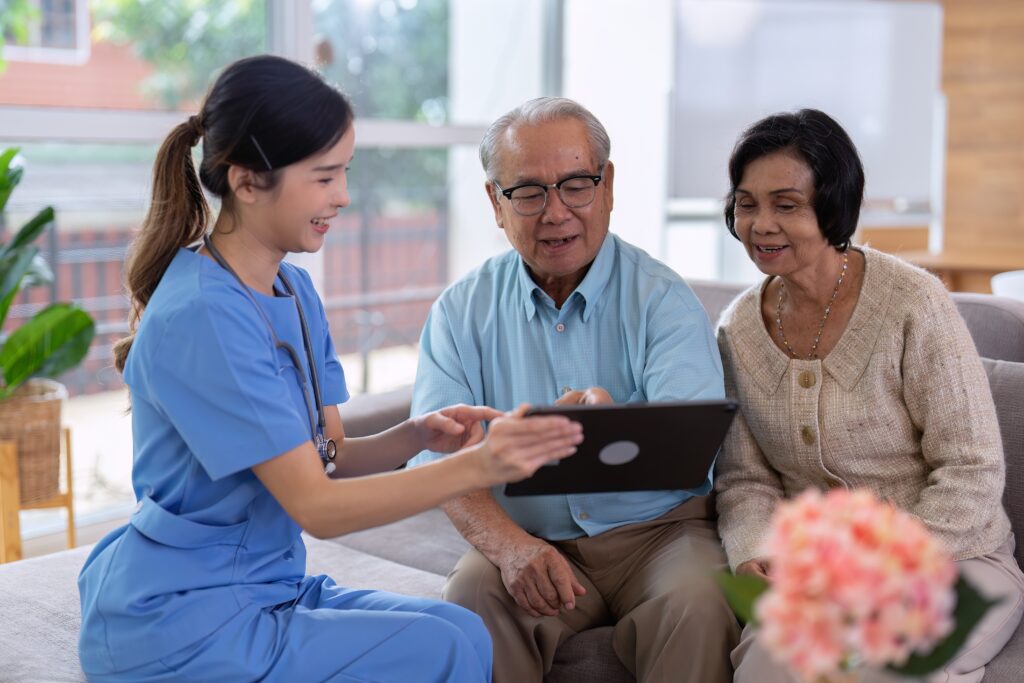How to implement a proactive approach to address health-related social needs
To truly transform care, the healthcare industry must move beyond cataloging problems or waiting to take action when patients come to acute-care settings.

Disparate healthcare access and the factors contributing to those disparities perpetuate inequitable health outcomes. This is not a revelation to anyone who has been on the wrong side of equity or their advocates. The toll that the COVID-19 pandemic took on these vulnerable populations exposed the extent and effect of inequity to a broader audience, making it harder to ignore.
As healthcare systems and government entities were forced to confront the impact of health inequity and health-related social needs (HRSN) on both outcomes and overall costs, they began to discuss potential solutions, including changes in policy to assess and ultimately address the sources of inequity. The ability to address these inequities rests in our ability to identify them accurately. But how are we assessing these needs, and what will we do with this information?
Improving measurement
With the 2023 IPPS Final Rule, the Center for Medicare and Medicaid Services (CMS) introduced two new measures as part of the Inpatient Quality Reporting (IQR) Program – they are SDOH-1, screening for social drivers of health. and SDOH-2, screening positive rate for social drivers of health.
These measures are voluntary in 2023 but will become mandatory in 2024. These changes will require every hospital submitting IQR to ask inpatients 18 years or older a series of questions on housing, transportation, food, utilities and personal safety. These questions screen for the specific HRSNs affiliated with these domains.
Identifying the percentage of this patient population screened and what subset of those screened express need merely provides evidence of a problem that nobody disputes exists. Further, the likelihood of gathering an accurate assessment of the extent and nature of need requires that those screened are willing and able to self-report. Success requires a level of trust between the patient and the person administering the assessment.
To truly transform care, we must move beyond cataloging problems. There must be clearly defined action behind what we do with that information to build trust. Let’s face it – HRSNs are not easy for patients to discuss with friends, let alone strangers. They can be embarrassing – no one wants to tell a stranger that they lost their job, that they are being mistreated in their own homes, that they can’t afford to feed their children, that even if food were available, with their utilities shut off, they could not refrigerate that food, or medications like insulin.
To provide that level of sensitive information, patients need to know who else will have access to it and how it will be used. If patients feel these questions are merely an exercise in box-checking for the sake of regulatory submissions and not an honest effort to understand their needs and offer solutions, the potential to build trust will be lost. Patients will become resentful if they are perpetually answering questions for “research purposes” without any real solutions offered.
Taking action
We are inspired by the lengths our customers have gone to uncover those health-related social needs impacting their patients’ care. For example, one of our customers was able to attribute a patient who frequented the emergency department to that patient wanting a free meal on the days the local church did not offer one.
Another customer provides a mobile clinic, which travels to underserved neighborhoods to offer walk-in care for those patients in rural areas who cannot secure transportation to doctors. Another has even opened a mental health clinic in their schools so children do not need to be pulled out of school to undergo counseling. These examples are at the heart of where we need to be.
Addressing health inequity may start with data collection, but it should not end there. It needs to involve relationships with patients and within the community. This engagement begins with identifying the community's most significant challenges, such as affordable housing, lack of public transportation or access to clean water. Identifying the problems starts locally, but the search for solutions should extend from the community outward.
There is no single “right solution,” as each patient's and community's needs may differ. Though government programs at local, state, and federal levels may offer some assistance, if it were enough, the topic of HRSN would not need any attention. For this reason, healthcare organizations hoping to effect change must be creative and forge relationships with community-based organizations, civic groups, and recognized philanthropies. The ability to connect with support programs could include working with marketplace clearinghouses like Unite Us or Find Help.
Engaging community support
By establishing a community support network and securing grants to fund additional programs, providers will have a solid foundation to ask the right HRSN questions and provide meaningful support. For example, interventions may involve providing food vouchers for healthy meals, transportation to and from appointments, appropriate safety precautions in the home, loaning out of mobile hotspots to offer patients access to their health portals, or securing safe and affordable housing.
Trusting relationships take time, which is a shortcoming of implementing regulatory measures at the inpatient level alone. If the first time a healthcare system identifies a patient’s need is when they seek care in the acute setting, they are already far behind. The complexity of the patient’s needs may have worsened, leading to more costly care and avoidable admissions.
To be effective, organizations must start asking HRSN questions at physician practices, outpatient drop-in clinics and in the emergency department, where patients may frequently seek care because they lack insurance. Independent of who asks these questions and where, it is essential that they not be asked repetitively and without offering solutions.
An integrated and interoperable EHR is essential, so care providers across settings can see a prior indication of need. Acknowledging what the patient has previously shared, discussing actions taken and focusing on remaining needs are capabilities that provide an opportunity to build trust. Setting tone and language also play a role in building that trust.
Turning plans into action
Consider whom you designate to ask these questions. While in the primary care setting, you may rely on a nurse or PCP but, patients may not have that same relationship in the ED or inpatient settings. Having case managers, patient navigators, social workers or other specially trained staff in place to ask these sensitive questions and direct patients to the appropriate resources for assistance can help further establish that trusting relationship.
You should also determine how to leverage your EHR to identify and reach out to those patients who qualify for assistance. Beyond capturing responses to HRSN questions, EHRs can provide the option to link online questionnaires to a patient’s portal, with answers to these questionnaires populating patient registries. Registries can then identify patients who meet the criteria for various hospital-run programs (for example, support groups or ride-sharing programs) or community-run services, like Meals on Wheels.
You can also integrate your EHR with patient apps to track health and wellness activity. And by capturing discrete data across the EHR, analytics can play a key role in identifying patient trends, uncovering root causes of health issues, and working within the community to initiate a plan of action.
Healthcare systems can anticipate the introduction of additional programs and regulatory changes, as evidenced by the recently announced CMS Making Care Primary (MCP) Model, which the agency will pilot in eight states. This model will help address HRSNs for people covered by Medicare and Medicaid by giving primary care clinicians the tools they need to partner with specialists and community-based organizations to improve patient care and outcomes.
It is also important not to limit the scope of inquiry to the needs outlined in quality programs and reporting guidelines, because so many HRSNs may contribute to health inequity. For example, we must not overlook the growing mental health crisis and the impact mental health conditions have on a patient’s health and well-being. Mental health can contribute to a cascade of HRSNs, including a patient’s inability to hold a job, strained personal relationships and substance use disorders.
Systemic racism and bias must also be considered, with a recent Leapfrog Group Report identifying that Black and Hispanic patients are at an elevated risk for surgery-related adverse safety events, compared with white patients. For Black patients, this includes 34 percent higher rates of sepsis after surgery and 51 percent higher rates of dangerous blood clots.
While government policies can undoubtedly provide the spark, the real impact comes through our collective innovation and compassion. By brokering relationships with patients and our communities, we can give patients the peripheral support they need to drive healthier outcomes and bring about lasting change.
Kate Jenkins-Brown, Ed.D., is the lead for population health and care management at MEDITECH.
